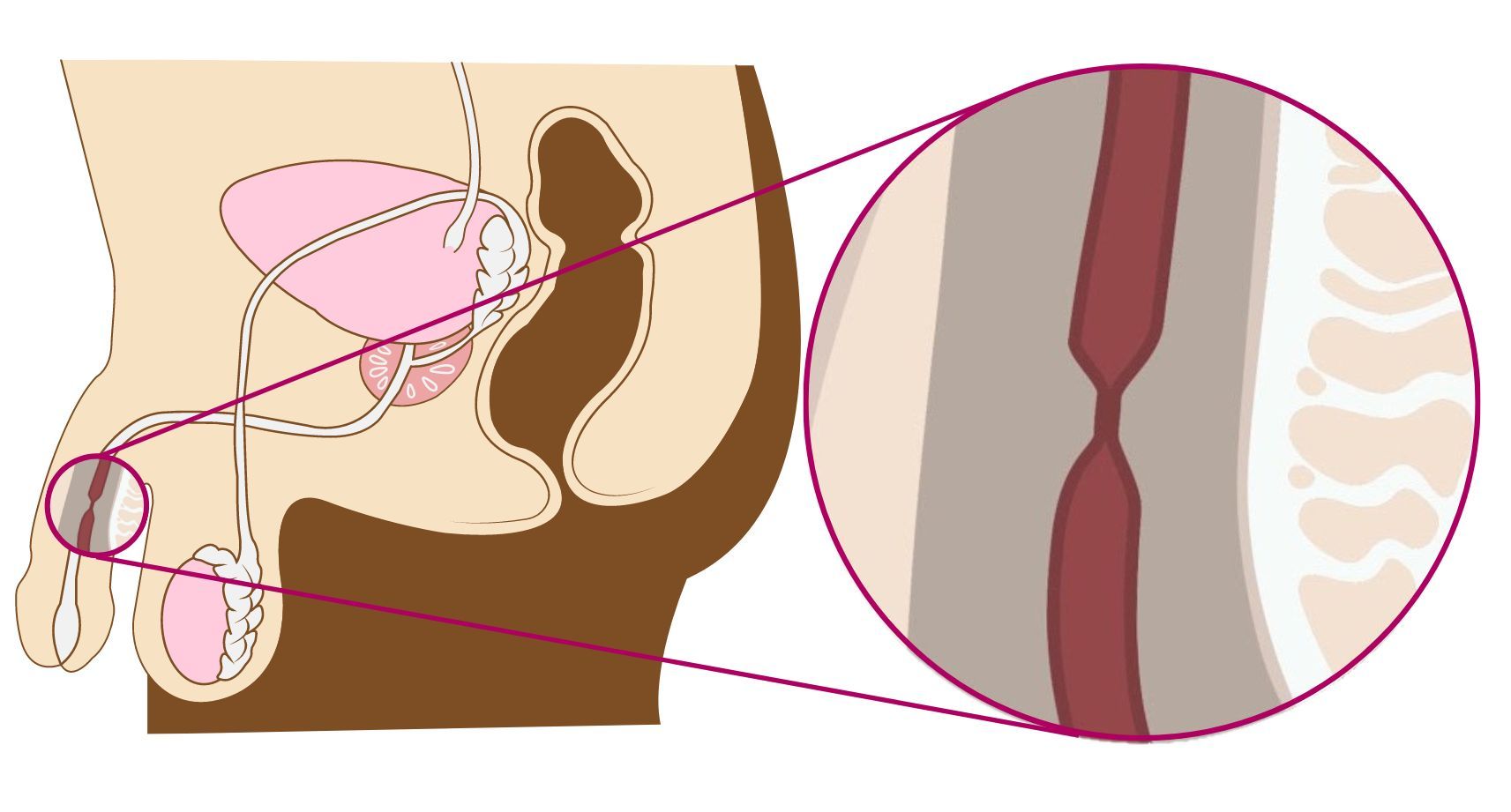Urethral stricture, also called urethral stricture or urethral stricture, is a condition in which the urethra, the channel that carries urine out of the bladder, is narrowed or blocked. This leads to difficulty urinating and other associated symptoms. Read more about the clinical picture, symptoms and diagnosis here: Urethral stricture – USZ

Treatment of urethral stenosis depends on the severity and extent of the stenosis. There are several options that can be applied depending on the individual situation. Together with our patients we find the individually suitable therapy option. A distinction is made between minimally invasive (endoscopic) and open surgical procedures:
Minimally invasive treatment methods
Bougienage: In this method, a special catheter or bougienage pin is inserted into the urethra to dilate and widen the stricture. This can be repeated at regular intervals to keep the urethra open.
Urethral slitting (urethrotomia interna, urethromy): In urethral slitting, a special instrument called a urethrotome is inserted through the external opening of the urethra. The urethrotome has a sharp blade or laser that is used to make an incision in the narrowed or scarred area of the urethra. This will widen the passage and release the blockage. Urethral slitting is usually used for short and relatively uncomplicated urethral strictures. The procedure has a relatively low complication rate and usually allows for a quick recovery.
Balloon dilatation with OptilumeTM
OptilumeTM is a new medical technology in the form of a small, cylindrical balloon coated with a drug. The balloon catheter is inserted into the urethra and placed at the narrow point. Once positioned, the balloon gently expands the constricted area while the released medication counteracts re-scarring. The balloon is coated with paclitaxel, which has been used effectively in various applications in millions of patients worldwide since 1992.
This procedure is relatively new and has many advantages. Thus, OptilumeTM can be applied on an outpatient basis and under short anesthesia. A catheter insertion after the procedure can also be dispensed with in many cases, or it is inserted for a maximum of two days. So far, the procedure is not yet covered by health insurance. A request for approval of costs will be made in any case.
Further information about OptilumeTM
Open surgical treatment
Urethroplasty: Especially in cases of prolonged or complex stenosis, urethroplasty may be necessary. In this procedure, the narrowed area is surgically opened or removed and the urethra is subsequently reconstructed. This can be done by different techniques, depending on the type and extent of the stricture.
End-to-end anastomosis: In this procedure, the two ends of the urethra are directly connected after cutting out the narrowed segment to eliminate the narrowing.
Tissue transplantation: In this procedure, healthy tissue, often from the oral mucosa (cheek or lip), is removed and used to reconstruct the urethra.
In complex or long urethral strictures, a segment of bowel may be used to reconstruct the urethra. This is usually considered as the last option.
Uretoplasty is an invasive procedure that is usually performed under general anesthesia. It is an established procedure that can achieve very good long-term results. For this reason, this method is often used for recurrent urethral strictures.
The choice of treatment method depends on several factors, including the length and location of the stenosis, the patient’s general health, and the presence of concomitant diseases. At the Clinic of Urology, the appropriate treatment option is implemented according to the individual situation.

